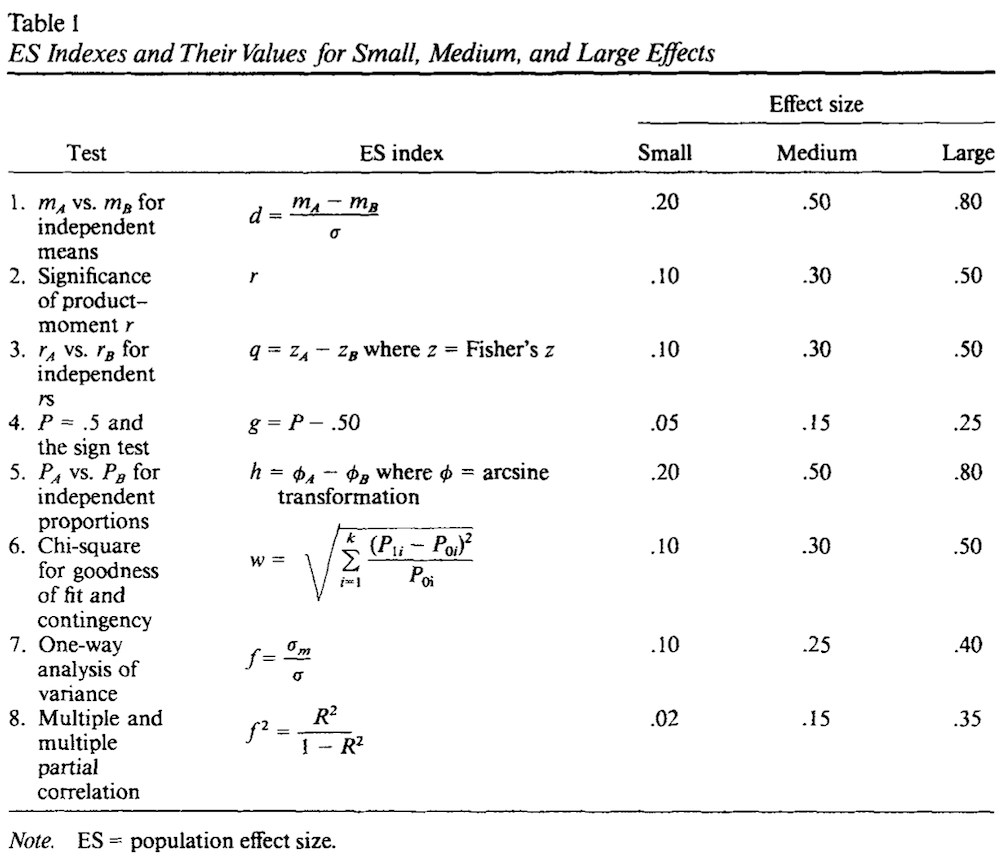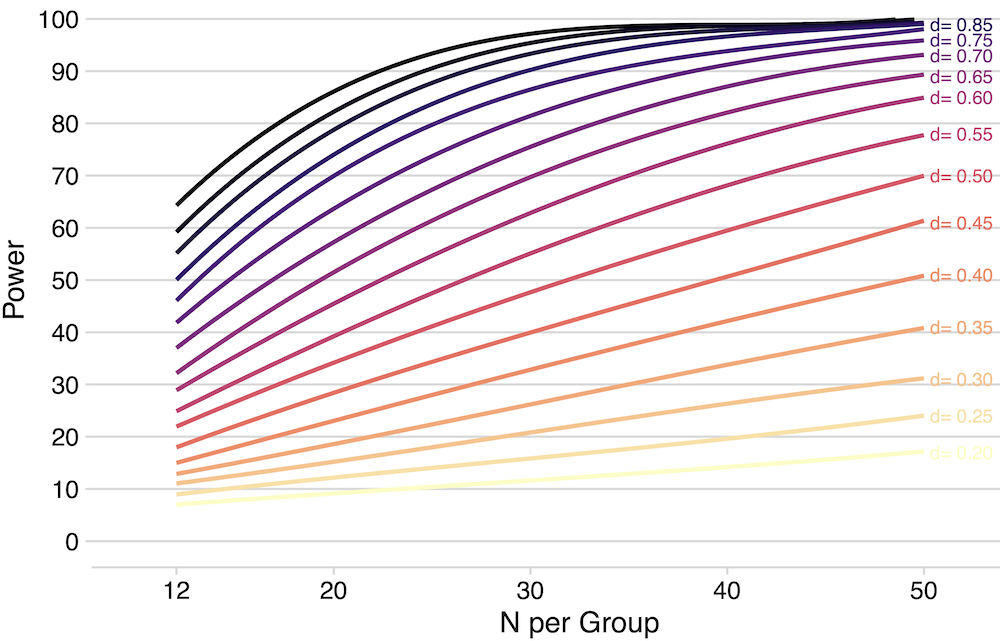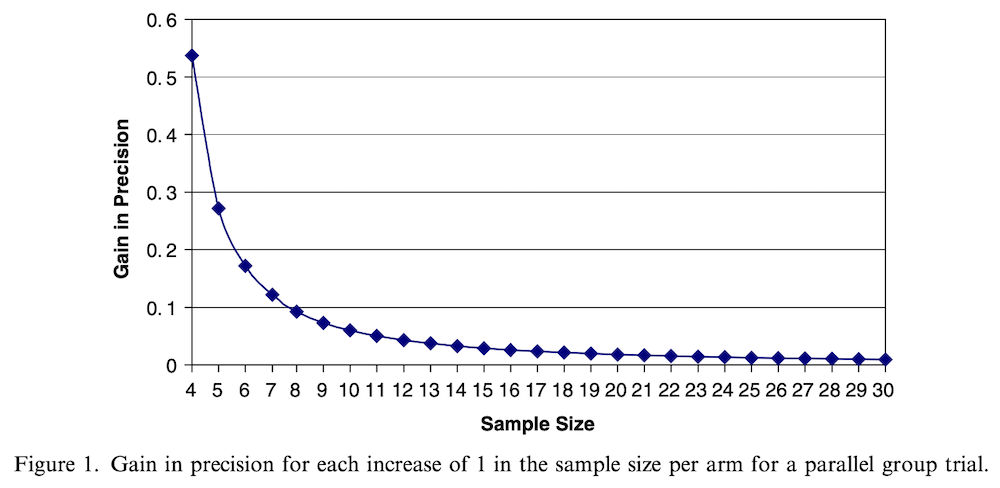Effect size references from Cohen
The effect size cutoff values presented in the table below were established by biostatistician Jacob Cohen. In very early phase trials with very little data, sample size can be justified based on the effect size (small/medium/large) might be interested in resolving.

Independent-samples t test power
For early cross-sectional studies with two independent groups, the chart below compares power vs. per group sample size. The effect sizes (as described above) are indicated by color.

Conversion from Log Odds to d and back
Although we use Odds Ratios constantly, they were not considered in Cohen's original work. Now it is quite common to convert from log Odds Ratio to d and back.

The justification for the "rule of 12" by Julious
We often see 12/group in early studies. One justification for this is that the precision with which we are able to estimate the mean difference begins to exhibit diminishing returns after N=12 per group. (More specifically, the gain in precision associated with choosing N of 13 over N of 12 is less than the gain in precision associated with choosing N of 12 over N of 11.) This is a post-hoc justification, as researchers had been using N=12 for ages; but it seems to buttress our collective intuition. One critical thing to consider in clinical work is that this justification relies on the assumptions that each group of 12 is 1) relatively homogenous and 2) representative of the entire population of interest. This should be considered very, very carefully.
